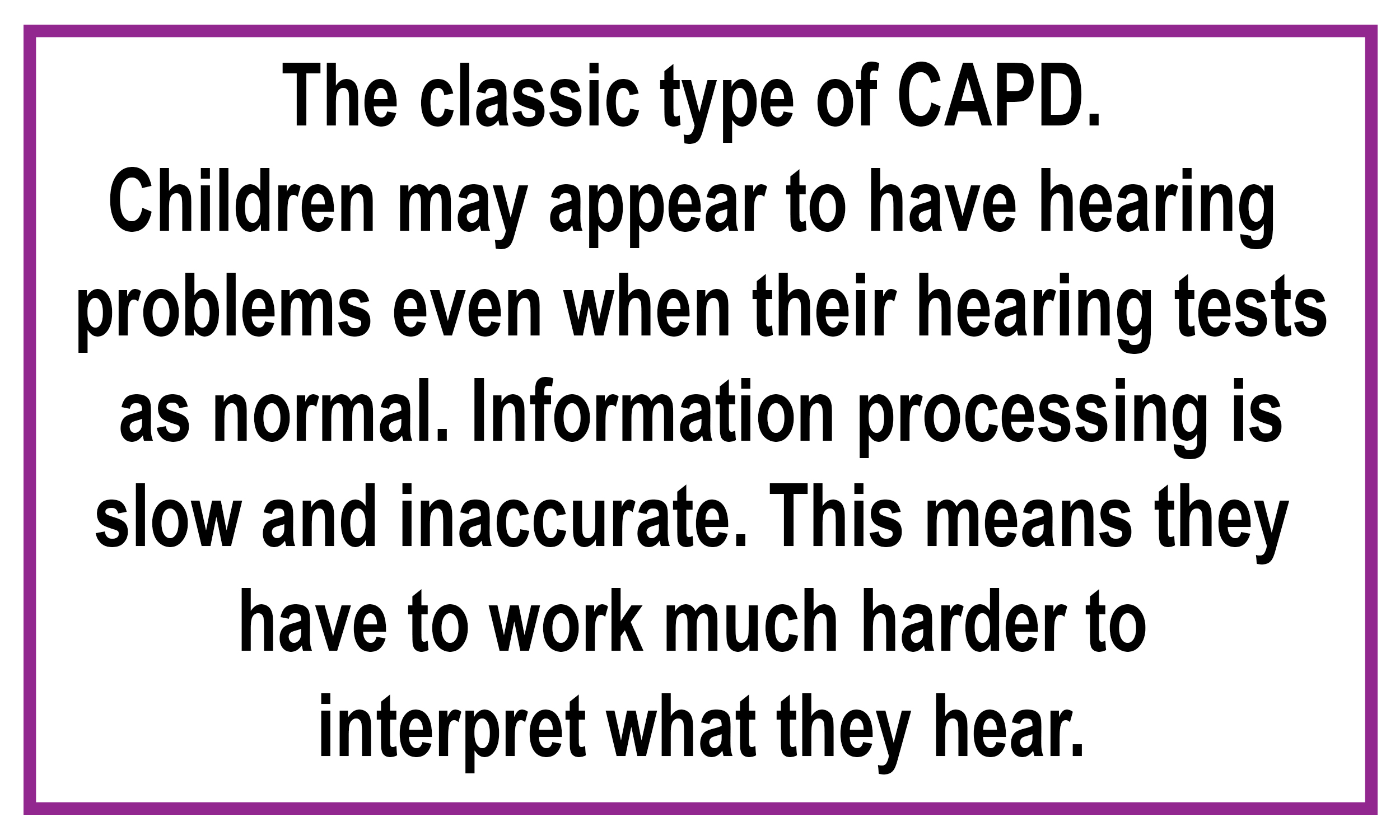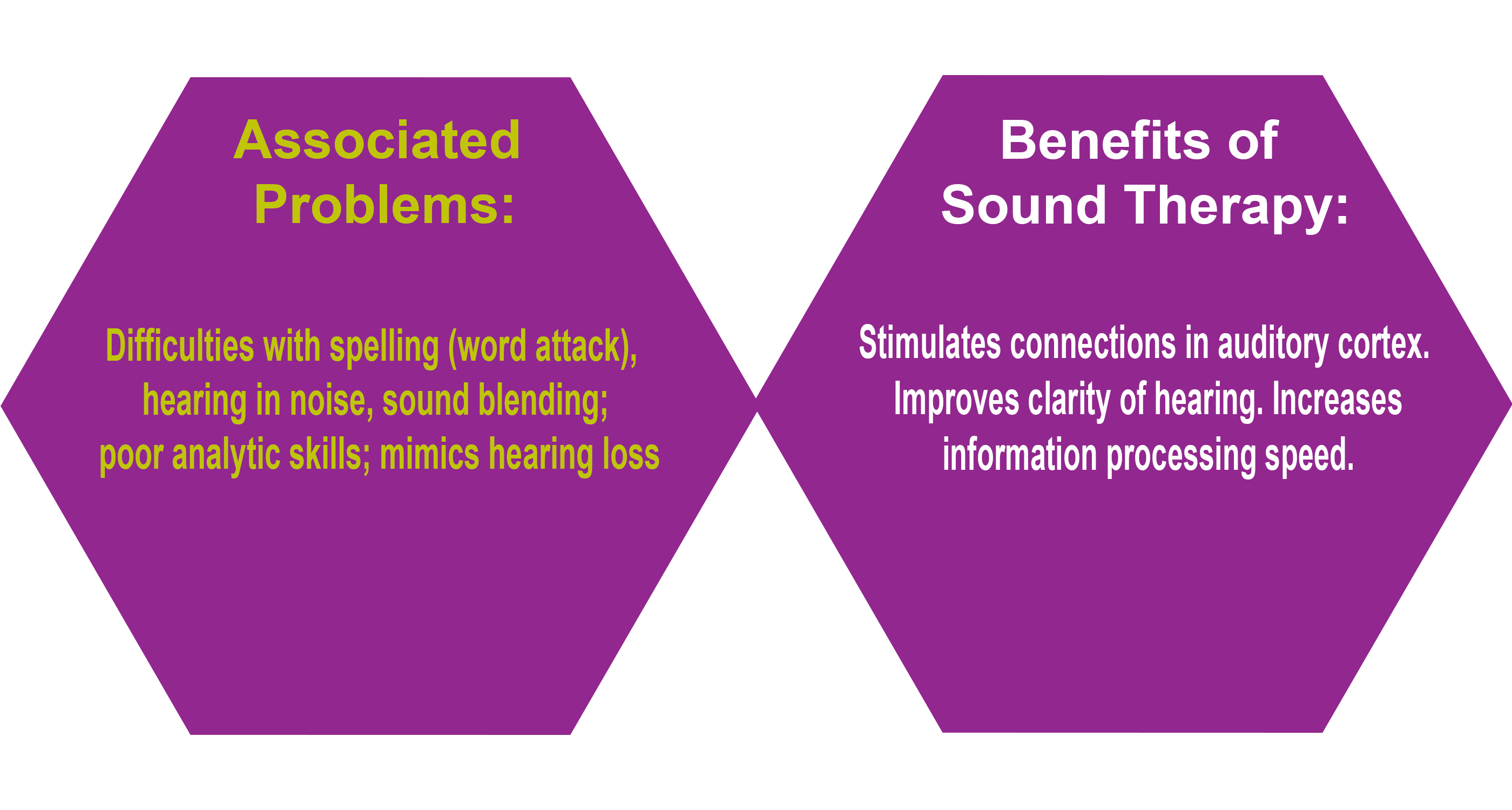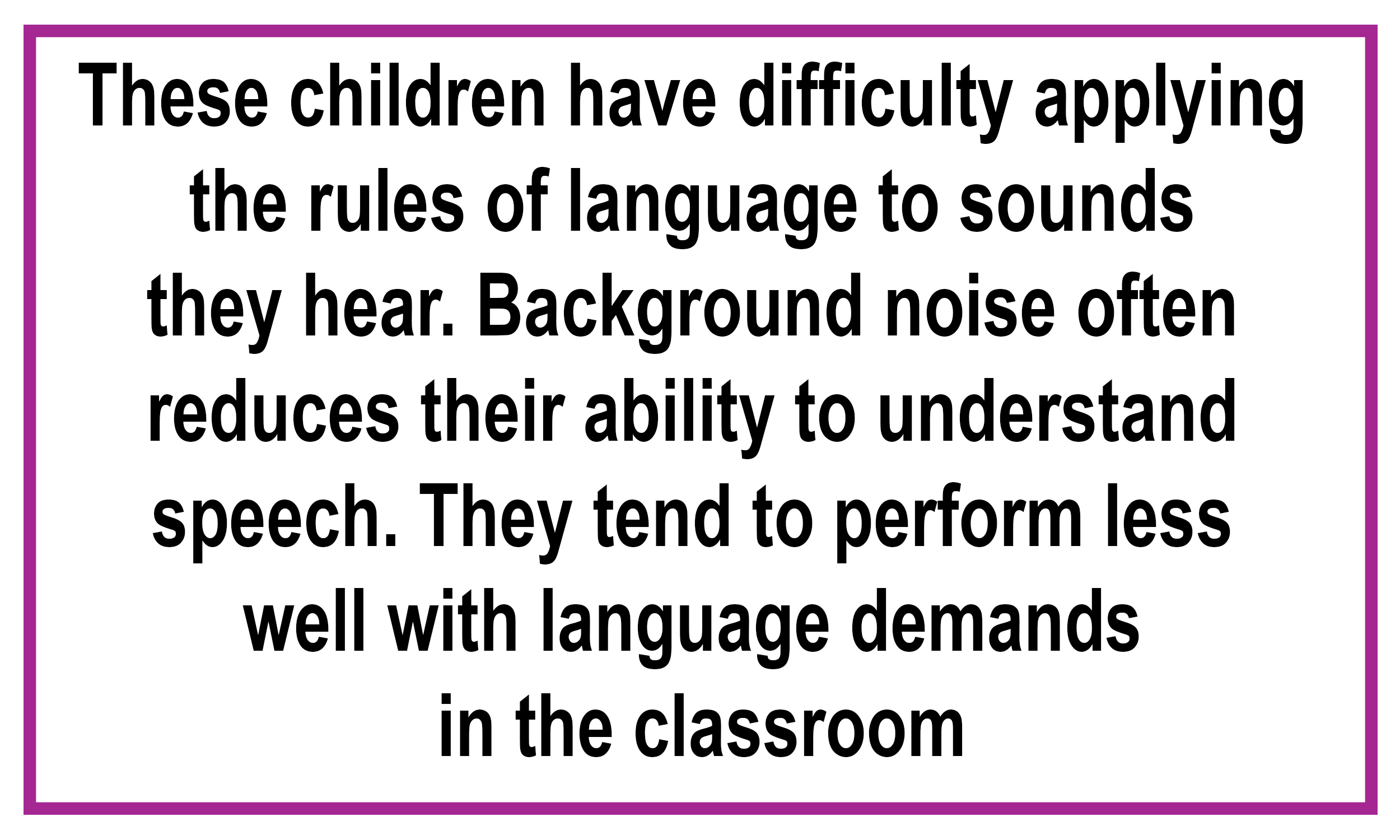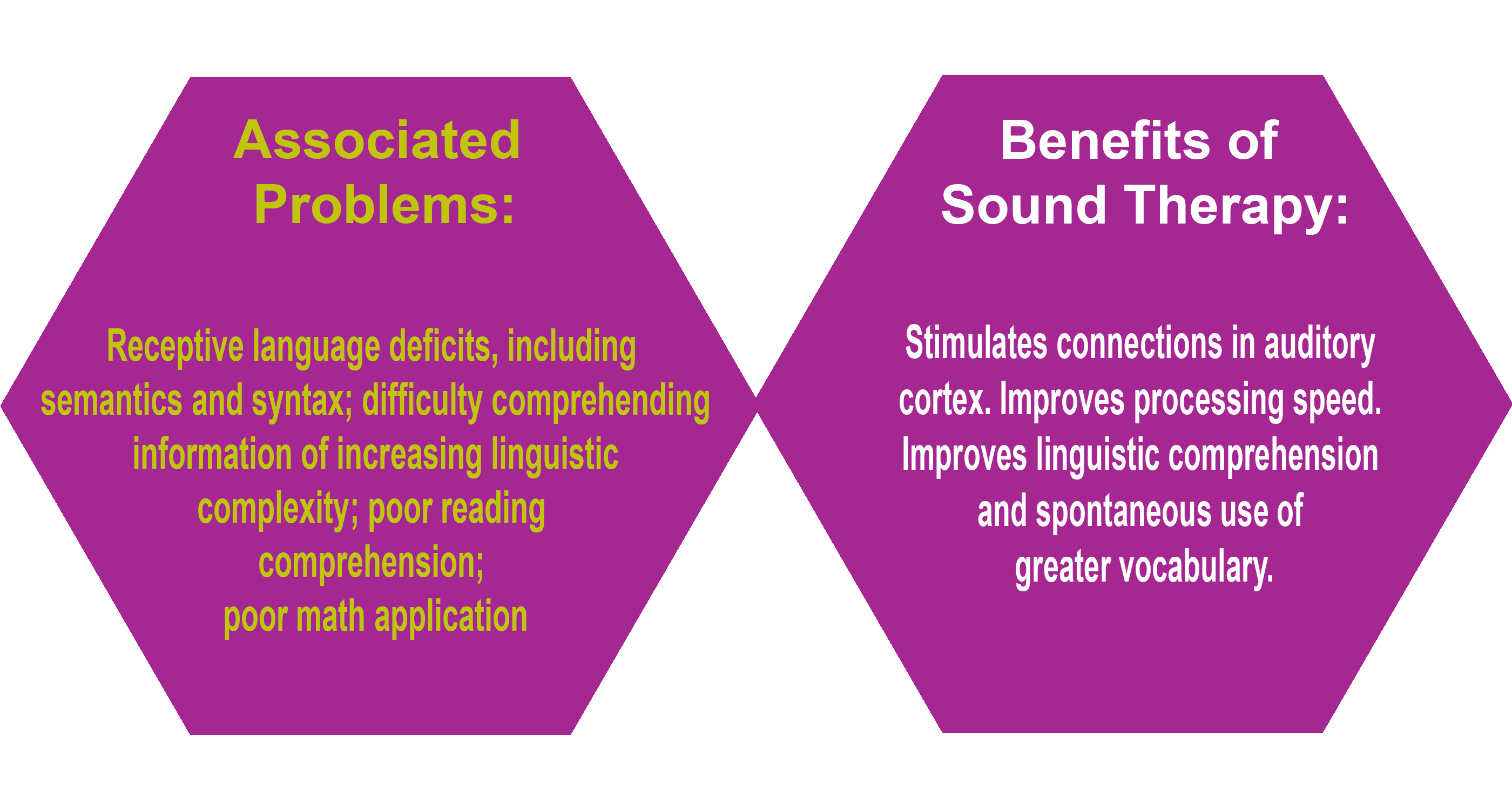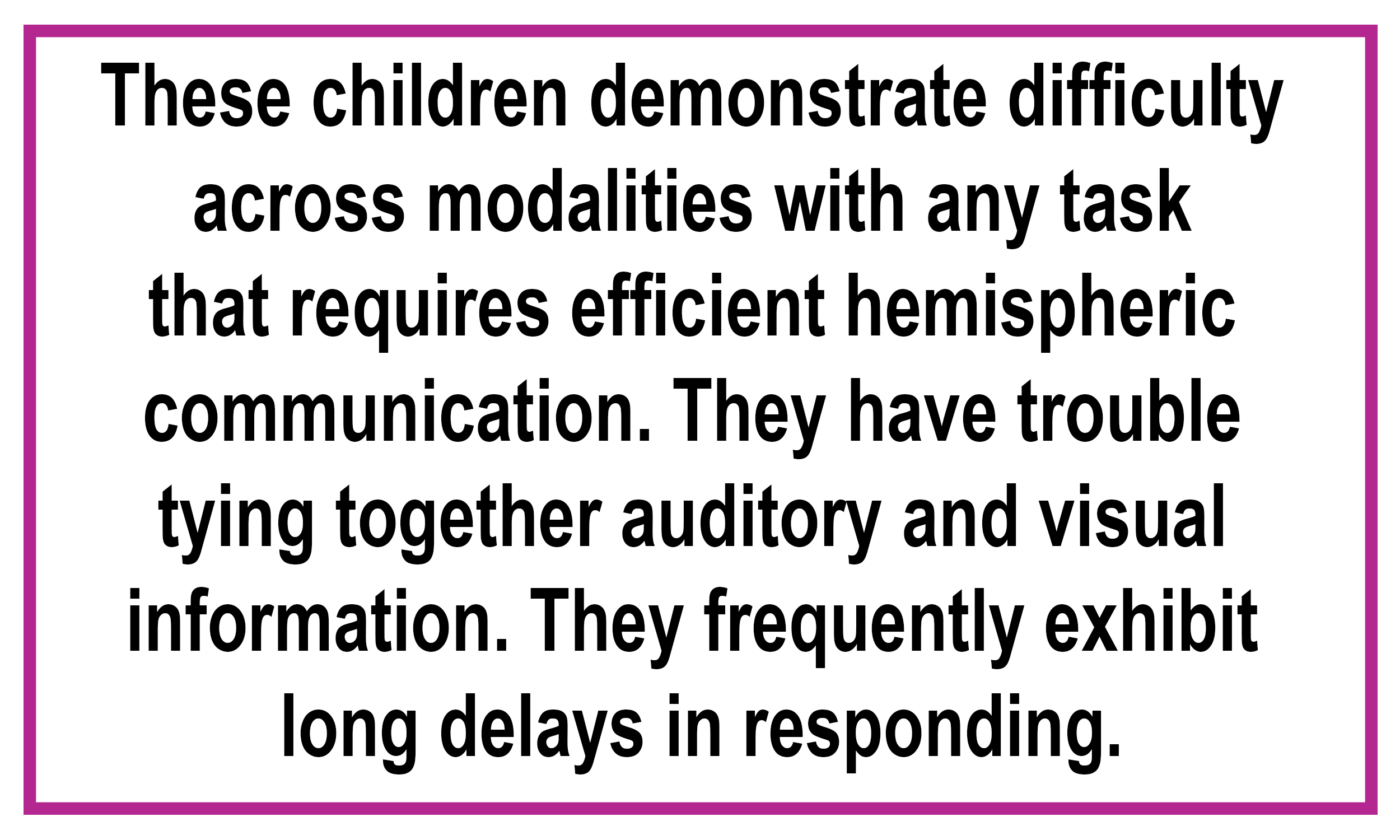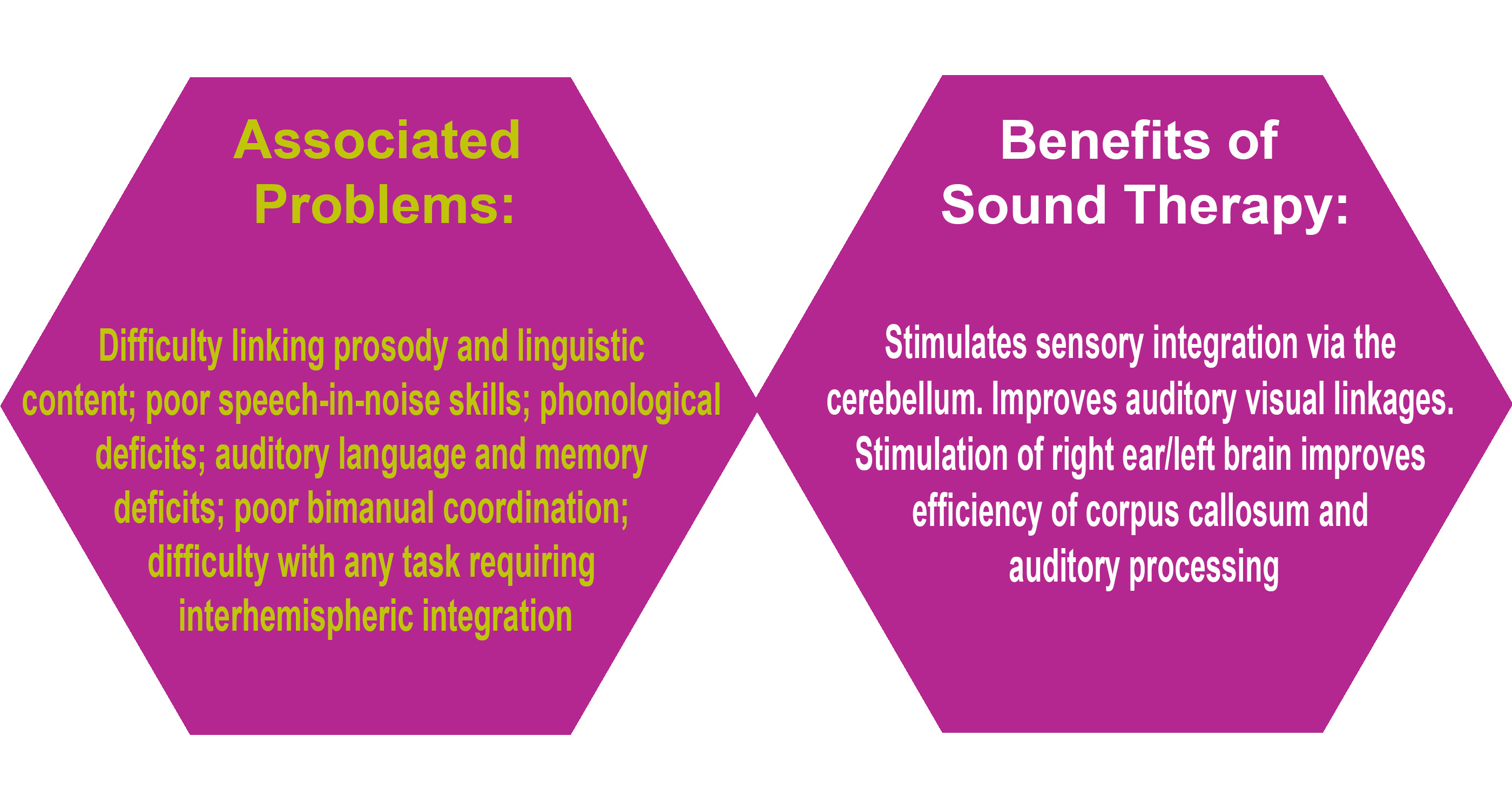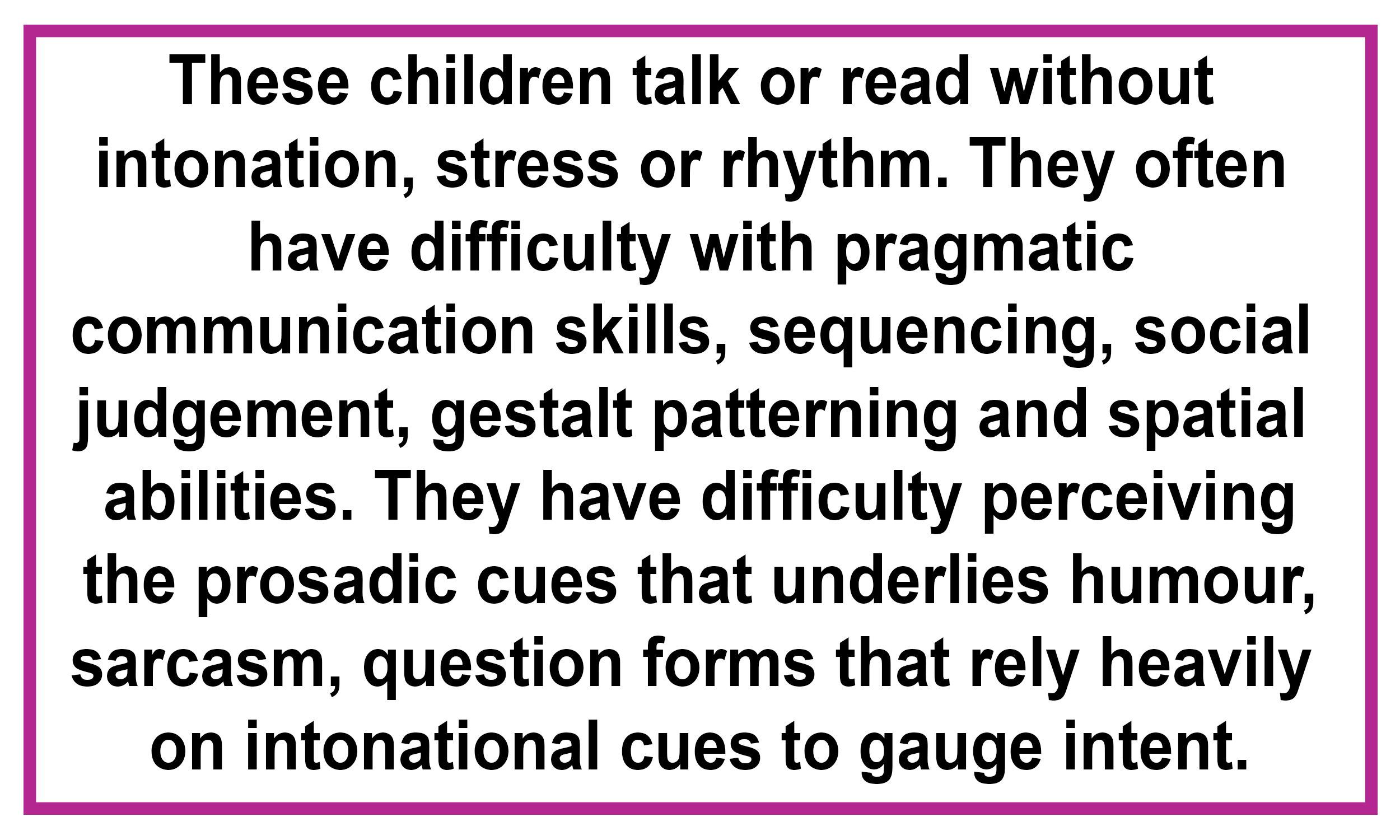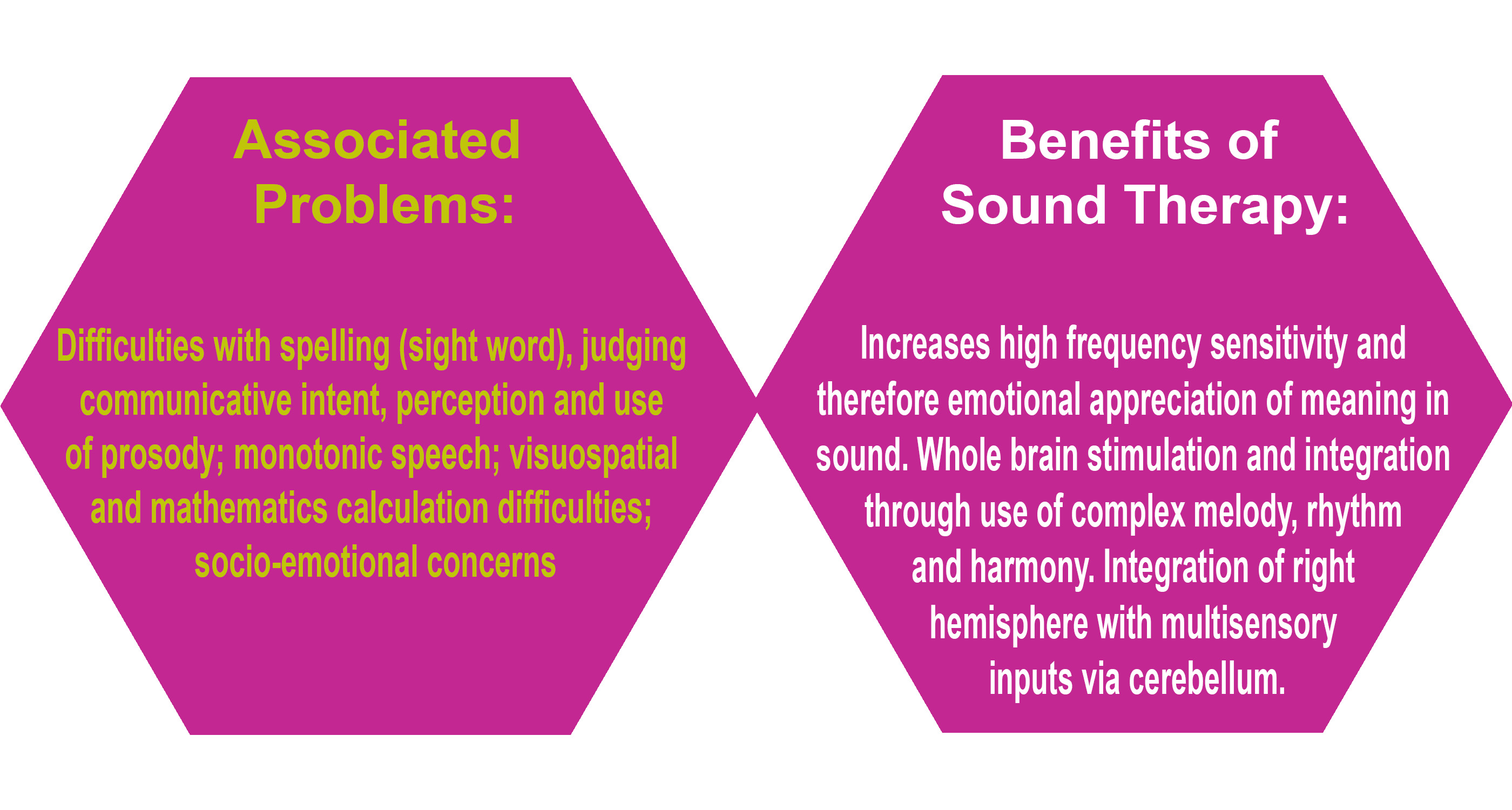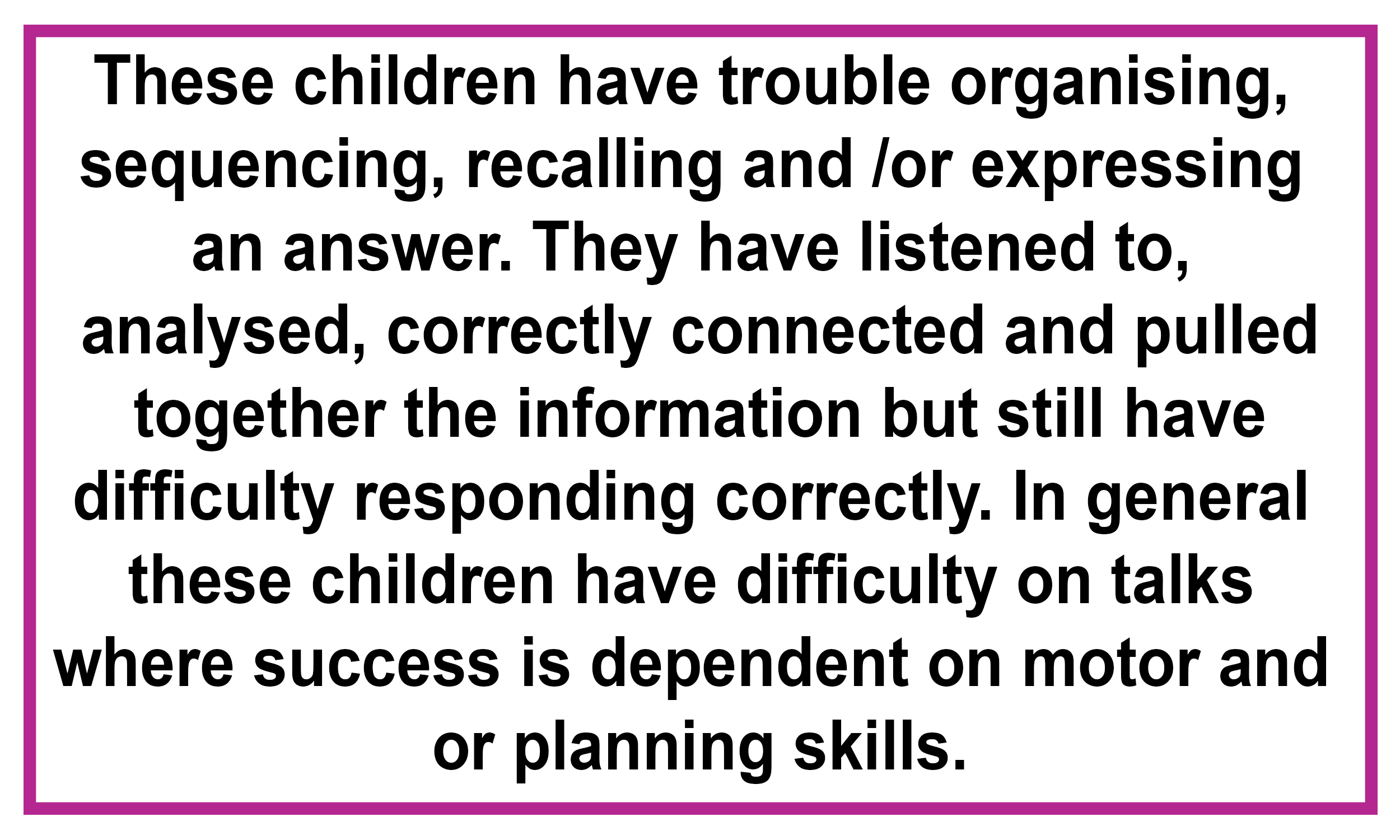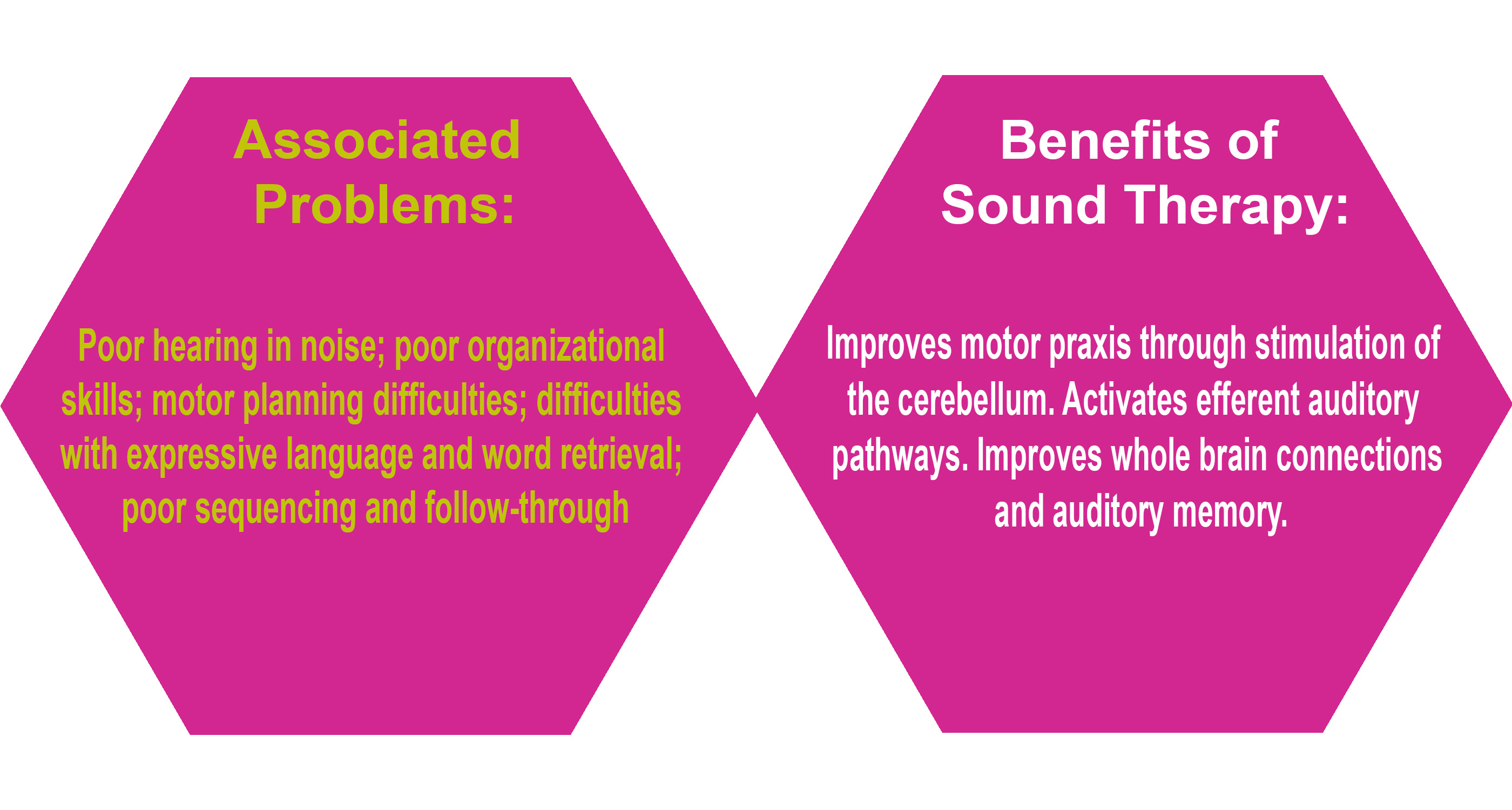6.1.2 Auditory Processing Disorders
What is auditory processing disorder?

A difficulty in the processing of expressive and/or receptive language.
A disorder of auditory processing means we have difficulty making sense of and formulating language.
Successful listening and learning depends on good auditory processing.
Auditory processing means the ability to translate the stream of vocal speech sounds into words and meaning, and then recreate those sounds as speech.
Auditory processing describes how we pay attention to sound, or in other words, how the brain interprets the sounds we hear. Auditory processing can be defined as the ability to ‘hold, sequence and process’ auditory information.

First we must be able to decode auditory signals (sounds) as they are delivered. Then we need to integrate these with other environmental cues, and organise it all in a meaningful way. Unless we have these abilities, our relationships, learning and development can all become quite difficult.
Effective auditory processing depends first on accurate hearing. Children must be able to see the printed letter, hear the sound of the letter, say the sound, relate the sound to the written symbol for the letter, and then register it and store it in the auditory cortex. Then they need to be able to retrieve the memory and relate the letter symbol to the sound again, and recreate it vocally. In addition, they need to be able to blend the letter and its sound with all the other letters which form a word. Therefore, there is a great deal more than hearing required for successful use of language.
Good auditory processing requires a high speed of information transfer between the ears and brain. It also requires a strong attention span, a good memory, and sensitivity to the many subtleties of sound.
A fractional delay, at any stage of this perception and vocalisation, can lead to great difficulties when it comes to learning the complex literary skills of
reading, writing and spelling. While difficulties in speech may go unnoticed in the early years, they become magnified under the pressure to perform at school, and to translate spoken into written skills.
Timing is a crucial aspect of auditory processing, because a slight delay can mean the sounds are heard, or perceived or reproduced, in the wrong order. Such difficulties, called ‘linear sequential processing problems’, make it extremely difficult for the student to accomplish note taking and writing. Poor auditory memory may be part of the problem, and a person who is otherwise quite intelligent may have enormous difficulties performing academically when these functions are impaired.
Auditory processing disorder is also known as Central Auditory Processing disorder, or CAPD.
CAPD is a complex group of symptoms describing a difficulty with integrating auditory information. To assist our understanding and treatment, speech pathologists have broken this disorder down in to five sub-categories. These include:
- Auditory decoding deficit
- Auditory associative deficit
- Integration deficit
- Prosodic deficit
- Output organisational deficit
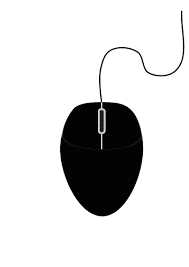 Mouse over the segments to learn about each element
Mouse over the segments to learn about each element
Categories of Central Auditory Processing Disorder - CAPD



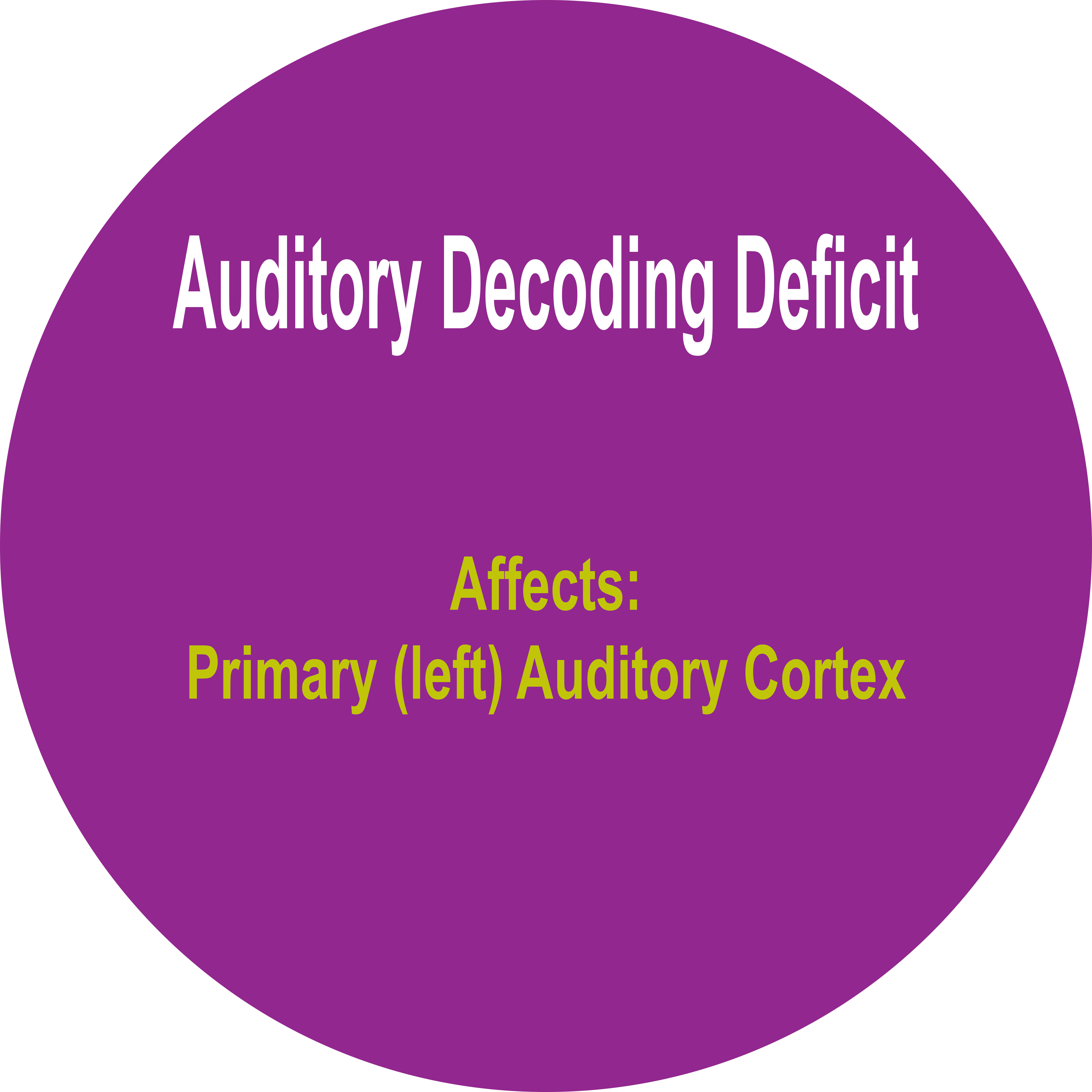
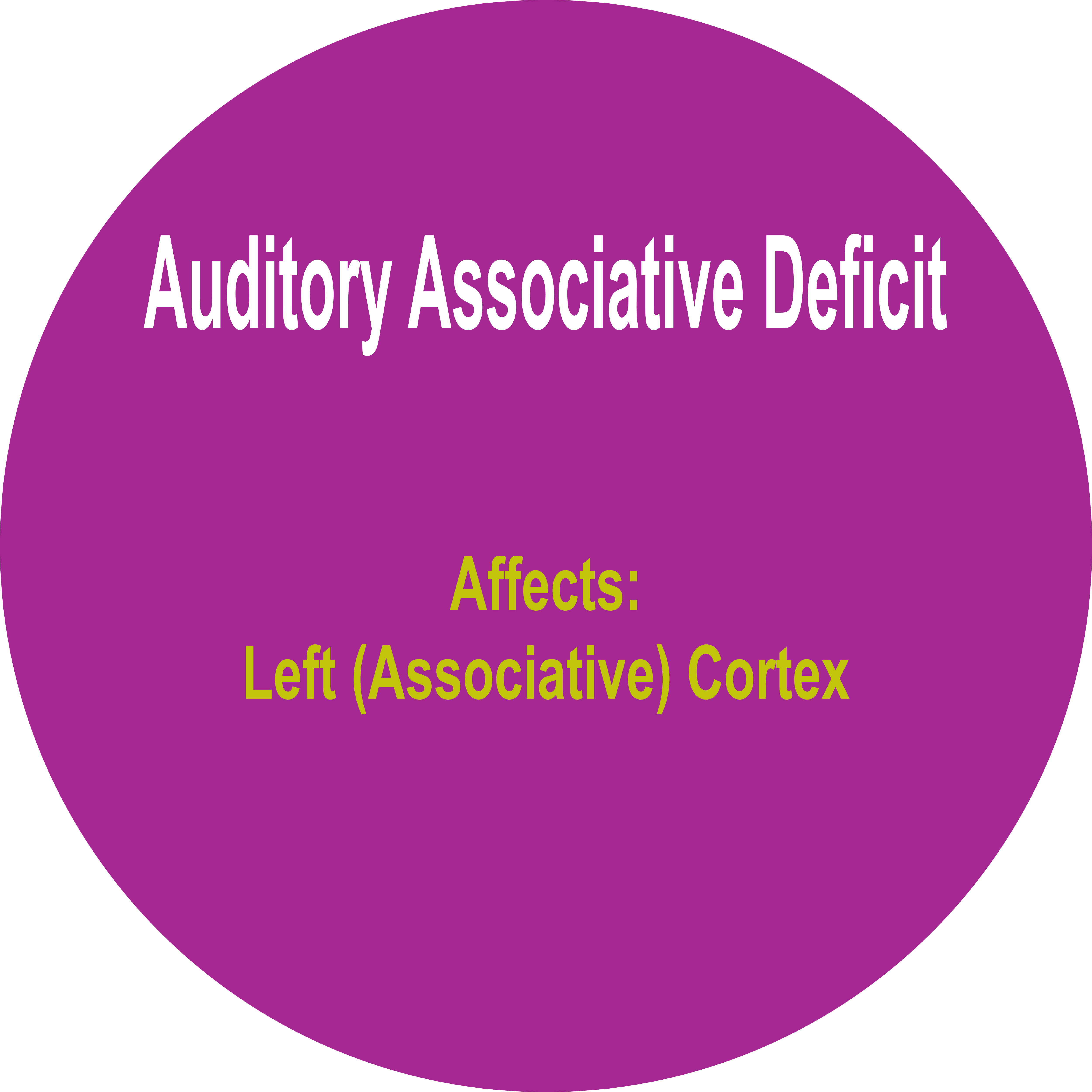
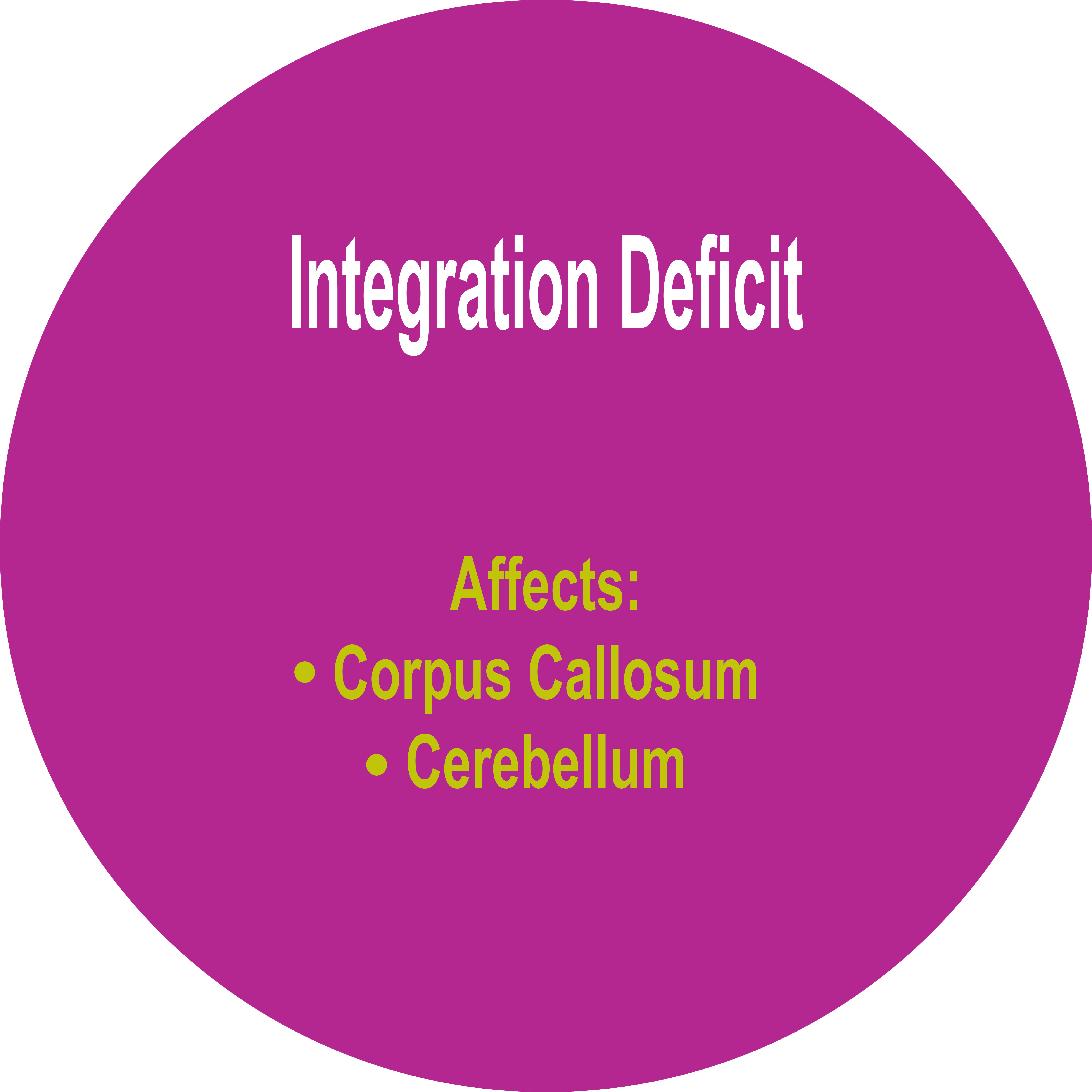
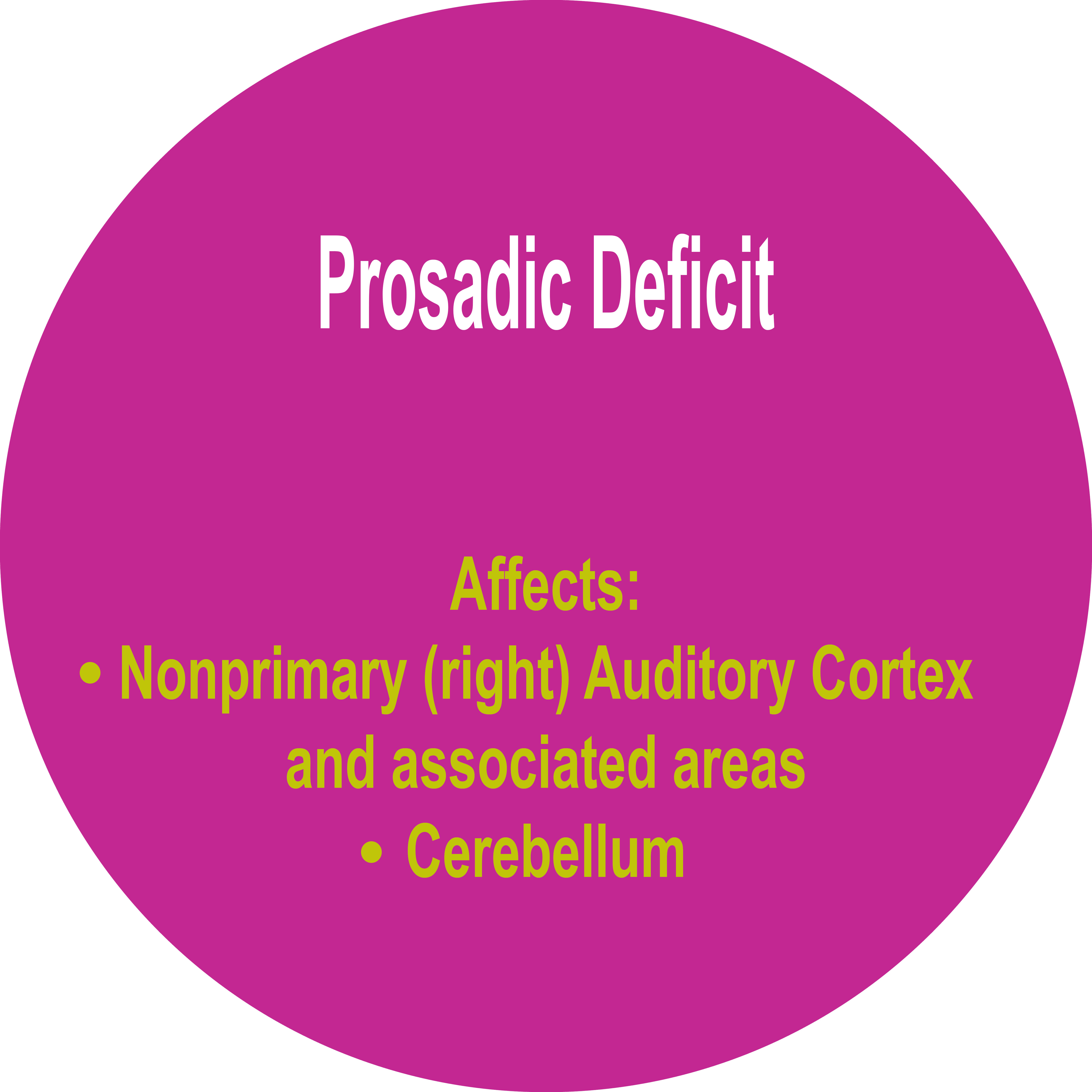
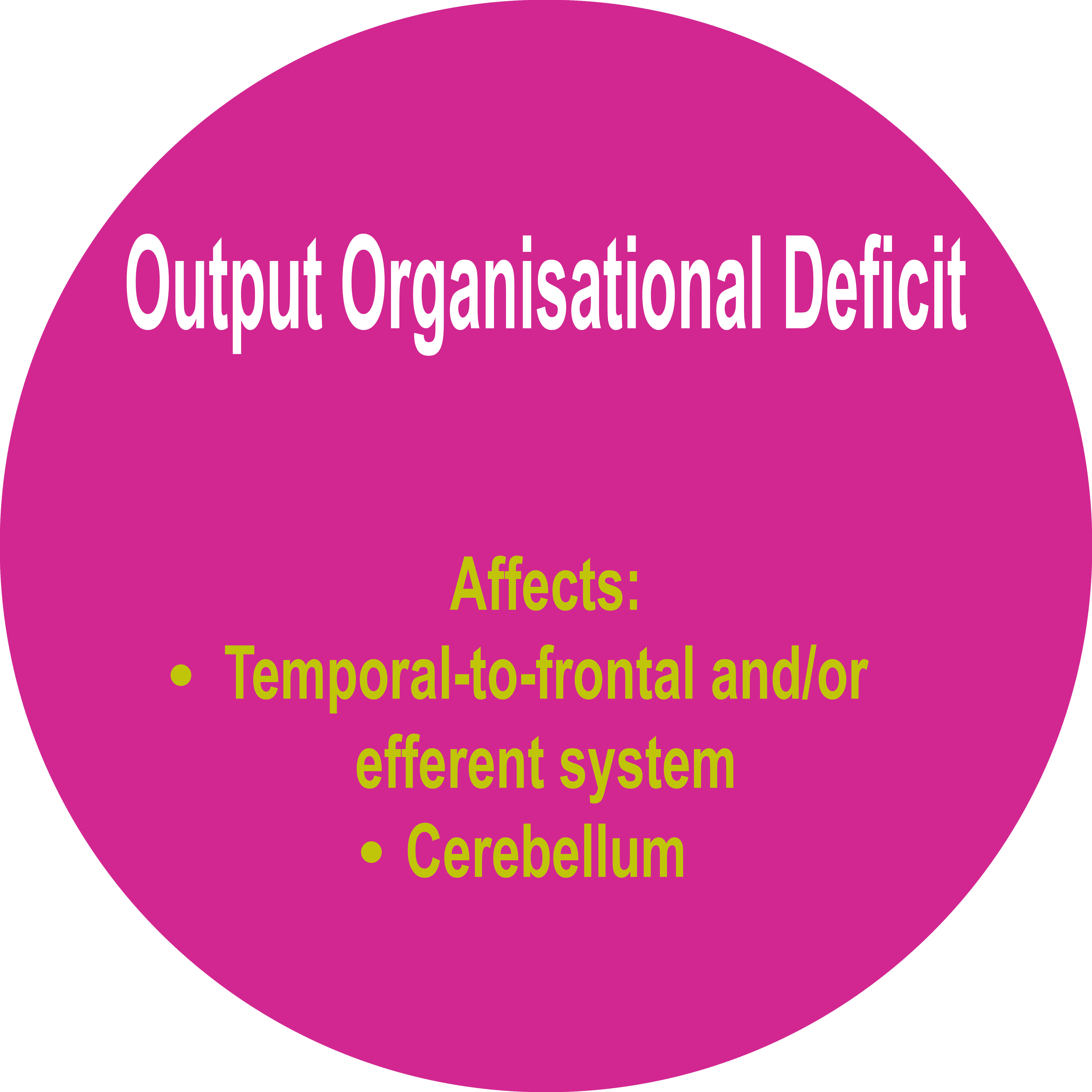
How does Sound Therapy help with auditory processing disorder?

Enhances brain plasticity and reorganizes brain pathways for language.
Sound Therapy reorganizes brain pathways for receptive and expressive language. It enhances processing speed and auditory memory. Helps to create efficient communication between the ear, brain and speech mechanisms.
It is believed that the stimulation provided by Sound Therapy improves the myelination of the auditory
pathways and therefore improves the processing speed of the sound signals.
 Mouse over the segments to learn about each element
Mouse over the segments to learn about each element
The following table is based on the work of Dr. Teri James Bellis' Subprofiles of CAPD.
In the table below, we have added into this excellent outline, the relevance and benefits of Sound Therapy for the different types of CAPD.
Sound Therapy improves Auditory Processing
mouse over the segments to learn about each element

To begin the process, we must be able to Decode auditory signals as they are delivered, so that we are receiving information accurately.

To make sense of sound, we need to Integrate auditory information with other environmental cues, so that it provides understanding and becomes meaningful.

To be able to focus our thinking, we have to Screen incoming auditory information to select and sort the relevant from the irrelevant.



